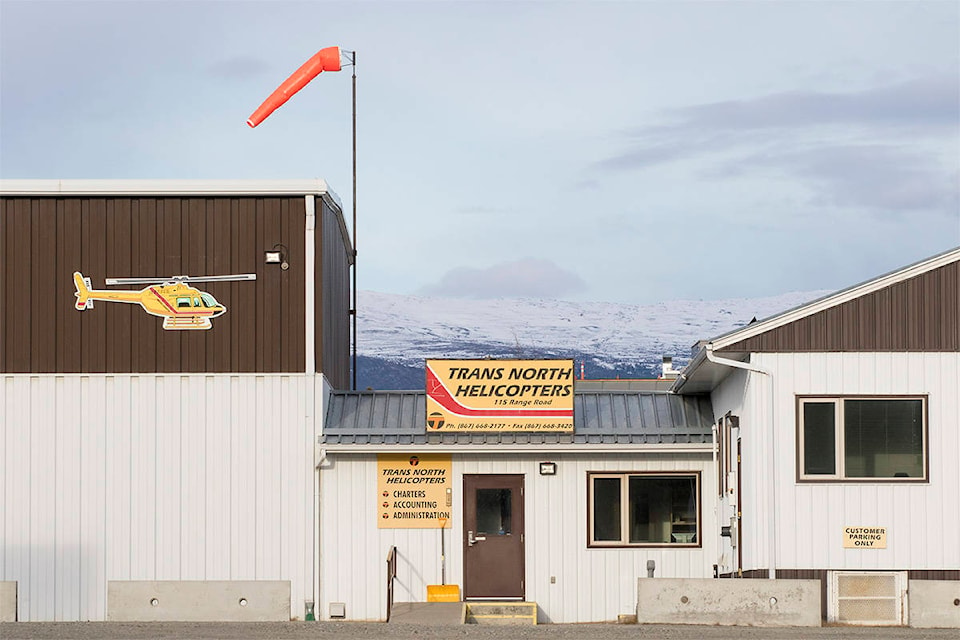Trans North Helicopters is being forced to move if it wants to keep flying out of Whitehorse.
The situation comes in light of the construction of the building of the city’s operations building next door to Trans North, specifically the two-storey wash bay being built on the south end of the city’s property.
City of Whitehorse officials say the city got approval from all the regulatory processes required to build its operations building, including the wash bay now at the centre of Trans North Helicopter’s decision to move.
Trans North general manager James Rose, who took on his position about one year ago after consultation on the operations building had already happened, said July 25 that the company will leave its current Range Road location in October because it’s unlikely it will be able to legally fly out of the site due to the proximity to the wash bay on the south side of the city’s property.
Helicopters must be more than 1,000 feet above both buildings and traffic when they fly and the proximity to the city’s wash bay greatly restricts that.
He said the company is essentially being forced to move into a smaller space closer to the airport.
Earlier this year Trans North voiced concerns with a ring road the city was proposing to put in to the operations building. The city halted work on that until Transport Canada could look at the issue and determine whether Trans North could continue to take off from the property if the road was built.
Rose explained it was during talks with Nav Canada on the road issue that the problem with the wash bay became evident to both Trans North and Nav Canada officials.
Peter O’Blenes, the city’s director of infrastructure and operations, told council July 22 the city is still waiting to hear from Transport Canada and Nav Canada on the matter about the road.
City spokesman Myles Dolphin acknowledged in an email July 25 that the location for the wash bay had changed from the original plans as work was being done on the operations building, but the updated proposal was brought back to Transport Canada and Nav Canada for approval.
“No red flags were ever raised by adjacent property-owners during this time,” Dolphin said. “In fact, the red flags were only raised earlier this year (after the wash bay plans had been approved), when the city began publicly sharing its plans for the second access road to the operations building.”
The ring road was proposed specifically for city vehicles that would be coming in and out of the operations building as a way of keeping city equipment off of the main roadway to the building.
Dolphin also questioned why the issue hadn’t come up when the foundation for the wash bay was being put in. The exterior of the wash bay is now fully constructed.
“That being said, we are always open to discussions with Trans North and our aim is to find amicable solutions in these situations,” Dolphin added.
Rose said though it seems there’s really nothing Trans North can do about the situation and will have to move if it wants to be able to take off from Whitehorse.
“It’s been a long and completely frustrating course of events,” he said.
The hanger Trans North will move to is about a quarter of the size of its current space which means helicopters will have to be partially disassembled to go in and some aircraft will likely have to stay outside through the winter months, which isn’t ideal for aircraft.
Trans North works out of a number of more remote areas in the field during the summer months and does not have to fly from Whitehorse during that time, thus there’s no need to move until the fall.
While Rose is working on a detailed estimate to get exact figures, he believes the move could cost the company in the neighborhood of $100,000.
Contact Stephanie Waddell at stephanie.waddell@yukon-news.com
